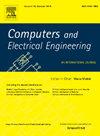Recovery for secret key in CTIDH-512 through Fault Injection Attack
IF 4
3区 计算机科学
Q1 COMPUTER SCIENCE, HARDWARE & ARCHITECTURE
引用次数: 0
Abstract
Isogeny-based cryptography is secure in a quantum computing environment and offers relatively small key sizes compared to other post-quantum cryptographic schemes. However, the CSIDH isogeny-based cryptography scheme is vulnerable to fault injection attacks, particularly the Disorientation Attack. This paper analyzes the Disorientation Attack on CSIDH and proposes an optimized method to recover the secret key for CTIDH, an extension of CSIDH. In CTIDH, the secret key is divided into multiple batches. The sign of each batch determines whether its isogeny operations proceed in a positive or negative direction. We explore the feasibility of adapting this attack to CTIDH to recover the secret keys. However, because of the unique isogeny operation in CTIDH, direct key recovery presents significant challenges. To address this, we propose an optimized Disorientation Attack for CTIDH, utilizing the differences in the number of points across batches. We also present the details and results of the implementation. Additionally, using the recovered secret keys from this optimized attack, we can enhance the existing Disorientation Attack to recover additional key values.
求助全文
约1分钟内获得全文
求助全文
来源期刊

Computers & Electrical Engineering
工程技术-工程:电子与电气
CiteScore
9.20
自引率
7.00%
发文量
661
审稿时长
47 days
期刊介绍:
The impact of computers has nowhere been more revolutionary than in electrical engineering. The design, analysis, and operation of electrical and electronic systems are now dominated by computers, a transformation that has been motivated by the natural ease of interface between computers and electrical systems, and the promise of spectacular improvements in speed and efficiency.
Published since 1973, Computers & Electrical Engineering provides rapid publication of topical research into the integration of computer technology and computational techniques with electrical and electronic systems. The journal publishes papers featuring novel implementations of computers and computational techniques in areas like signal and image processing, high-performance computing, parallel processing, and communications. Special attention will be paid to papers describing innovative architectures, algorithms, and software tools.
 求助内容:
求助内容: 应助结果提醒方式:
应助结果提醒方式:


